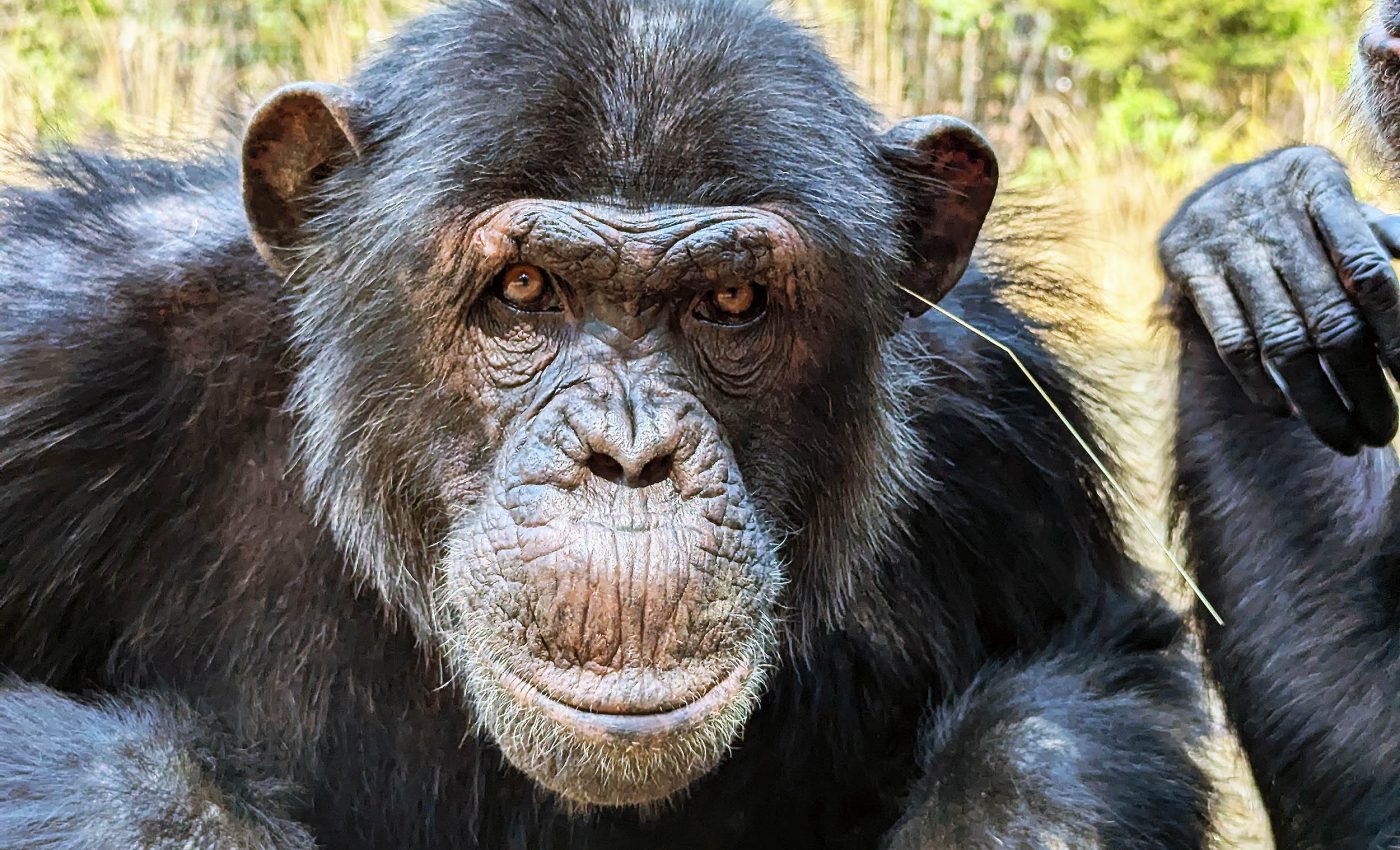
Chimpanzees copy strange, useless trends just like humans do
Chimpanzees are showing us that culture isn’t just about tools or survival. A new study at a sanctuary in Zambia has revealed something remarkable. Several chimpanzees began to copy each other by dangling blades of grass from their ears or behinds, for no clear reason.
The unexpected behavior appeared only in certain groups, despite all living in similar environments.
“This shows that, like humans, other animals also copy seemingly pointless behaviors from one another,” said Utrecht University researcher Edwin van Leeuwen. “And that, in turn, may offer insights into the evolutionary roots of human culture.”
Mimicking others, without clear purpose
People often copy odd trends like shaving eyebrow lines or dressing their pets. These habits spread fast but serve no obvious function.
In animals, copying usually relates to survival. Chimps teach each other how to crack nuts or fish for termites. But sometimes, animals embrace habits that seem to lack any benefit. Orcas wearing dead salmon as hats is one recent example.
This study focuses on such non-functional behaviors, rarely explored in depth. Back in 2010, a chimpanzee named Julie at Chimfunshi Wildlife Orphanage Trust started putting grass in her ear. Soon, seven others followed. Even after Julie’s death, her group kept the habit.
Researchers saw this as a cultural tradition, as it remained confined to her group and persisted over years. The behavior looked more like a fashion statement than a survival tactic.
Years later, another group at the same sanctuary began doing the same. They had no contact with Julie’s group, ruling out direct copying. Five out of eight chimps in the new group copied the grass-in-ear behavior.
Chimpanzees copying an odd trend
In an unexpected twist, the new group added a unique spin. Six chimps began inserting grass into their behinds, letting it dangle freely. Scientists named this “grass-in-rectum behavior.”
The researchers closely observed the spread of both habits. In August 2023, a chimp named Juma was the first to do both behaviors.
Within a week, four others copied the grass-in-ear trick. Within six weeks, five others copied the grass-in-rectum behavior. This happened without external prompting or visible irritation in their ears or behinds.
Evidence of social learning
The researchers analyzed how these behaviors spread within the groups. They used a statistical method called Network-Based Diffusion Analysis (NBDA).
The analysis showed that both behaviors spread mainly through social learning. In fact, over 80% of the chimps adopted them through copying others. Social ties strongly predicted who picked up the habits first.
Interestingly, even new chimps integrated into the group later copied the grass-in-ear habit within months.
Chimpanzees may copy humans
The researchers also considered the role of humans. Both chimp groups with these behaviors shared the same caregivers.
The caregivers sometimes cleaned their ears with grass or sticks. Other groups with different caregivers did not develop such habits.
“The chimps in the one group then figured out to stick the blade of grass in another place as well,” said Van Leeuwen.
In the wild, such trends are absent among chimpanzees. Captivity offers more free time and fewer survival pressures. That might explain why chimps experiment with odd habits there.
“Why they do exactly this particular thing, I’m not really concerned about. But them copying the behaviour from each other, that is the important insight,” noted Van Leeuwen.
Lessons for human culture
Some scientists think humans evolved culturally because we copy tiny details, even useless ones. Animals supposedly cannot do this, yet the study suggests otherwise.
“Our study shows that chimpanzees are able to copy small, useless behaviors from each other,” said Jake Brooker from Durham University. “That is why we felt it was important to share these new observations.”
Van Leeuwen’s team noted that these behaviors may not be entirely useless. They might serve as social signals.
“It could also serve a social purpose. By copying someone else’s behavior, you show that you notice and maybe even like that individual. So, it might help strengthen social bonds and create a sense of belonging within the group, just like it does in humans,” said Van Leeuwen.
The researchers also suggest these behaviors may reflect a deep social drive. Young chimps often form alliances and bonds through mimicry. In this case, lower-ranking males copied higher-ranking ones, likely to gain approval.
Chimps may copy for social reasons
Scientists propose that copying odd behaviors might help chimps integrate socially. Just like humans, they may copy group norms to build trust and reduce conflict.
One theory, the Zone of Proximal Acquisition, suggests that animals copy behaviors they can already physically perform but haven’t yet tried in that exact way. The grass behaviors fit this model well.
Another theory, the Zone of Bounded Surprisal, suggests animals are drawn to behaviors that surprise them yet feel familiar. Chimps already examine each other’s behinds frequently, making this behavior more noticeable and likely to spread.
Chimps have complex social lives
The findings challenge long-held views about animals’ cultural limits. Chimps show they can adopt unusual, non-functional behaviors through social learning. Whether these habits offer hidden social benefits remains to be seen.
Still, the very act of copying and passing down such behaviors highlights the complexity of animal cultures. It suggests that even seemingly pointless acts may hold value in the social lives of chimpanzees.
The study is published in the journal Behaviour.
—–
Like what you read? Subscribe to our newsletter for engaging articles, exclusive content, and the latest updates.
Check us out on EarthSnap, a free app brought to you by Eric Ralls and Earth.com.
—–













